Blue Pottery of Multan
Blue Pottery of Multan - Introduction
Blue Pottery of Multan, a unique form of Pakistani clay pottery, has long been admired for its stunning cobalt blue designs and intricate craftsmanship. This centuries-old art form, originating from Multan in southern Punjab, Pakistan, reflects a blend of Persian and South Asian influences. Today, the pottery's preservation and modern revival are significantly shaped by women artisans and entrepreneurs, who play an increasingly vital role in promoting this traditional craft, both locally and globally.
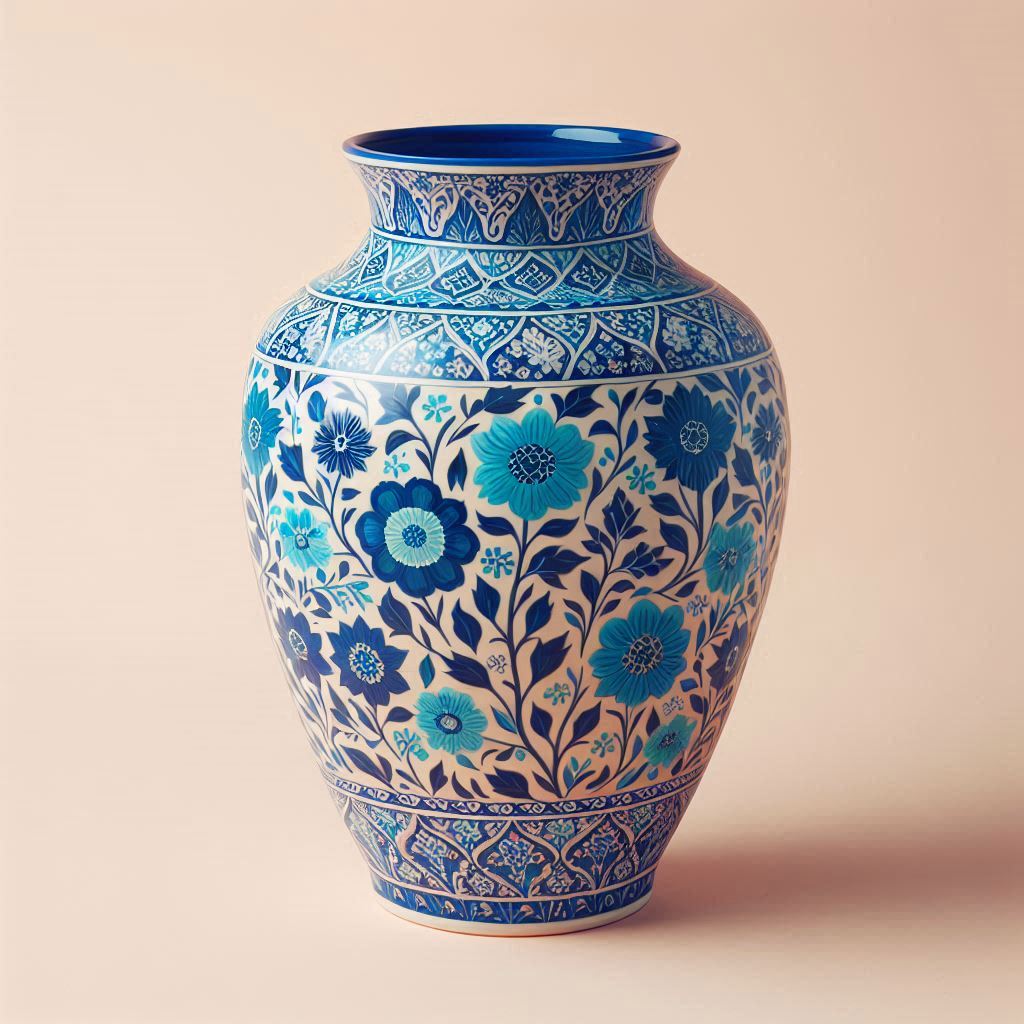 Blue Pottery of Multan-Vase
Blue Pottery of Multan-Vase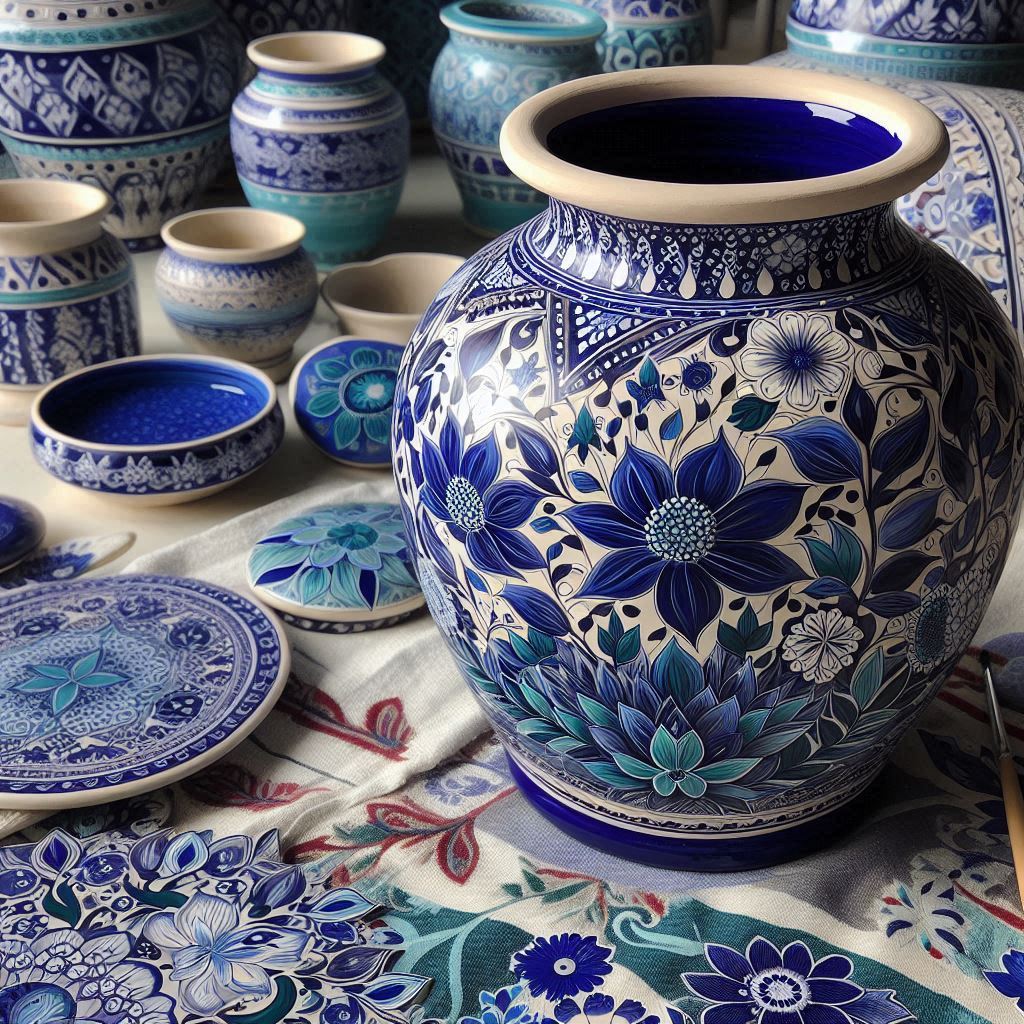 Blue Pottery of Multan-Vase
Blue Pottery of Multan-Vase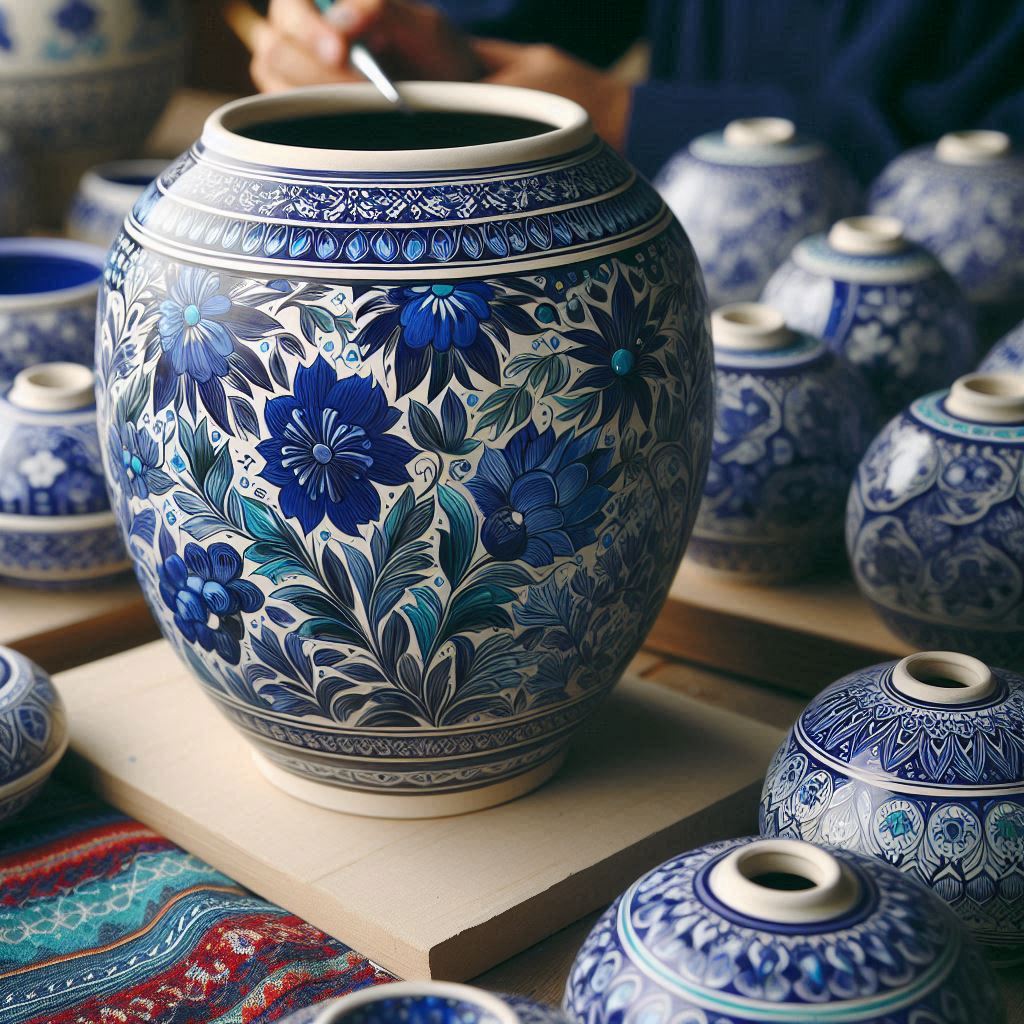 Blue Pottery of Multan-Vase
Blue Pottery of Multan-VaseBlue Pottery of Multan - A Heritage of Artistry and Tradition
Blue Pottery of Multan often referred to as 'Multani Blue Pottery' holds a special place in Pakistan’s cultural heritage. With its distinctive
cobalt blue and turquoise designs, this exquisite pottery has been a symbol of
elegance, artistry, and craftsmanship for centuries. The handcrafted pottery features intricate floral, geometric, and
Islamic patterns, painted with a cobalt blue glaze, symbolic of Pakistani
pottery traditions.
What makes this heritage even more vibrant today is the growing role of women entrepreneurs in preserving, promoting, and bringing this art form to the global stage.
Let’s take a journey into the history, origins, and significance of this remarkable art form, while also exploring its ties to Hala’s clay pottery in Sindh.
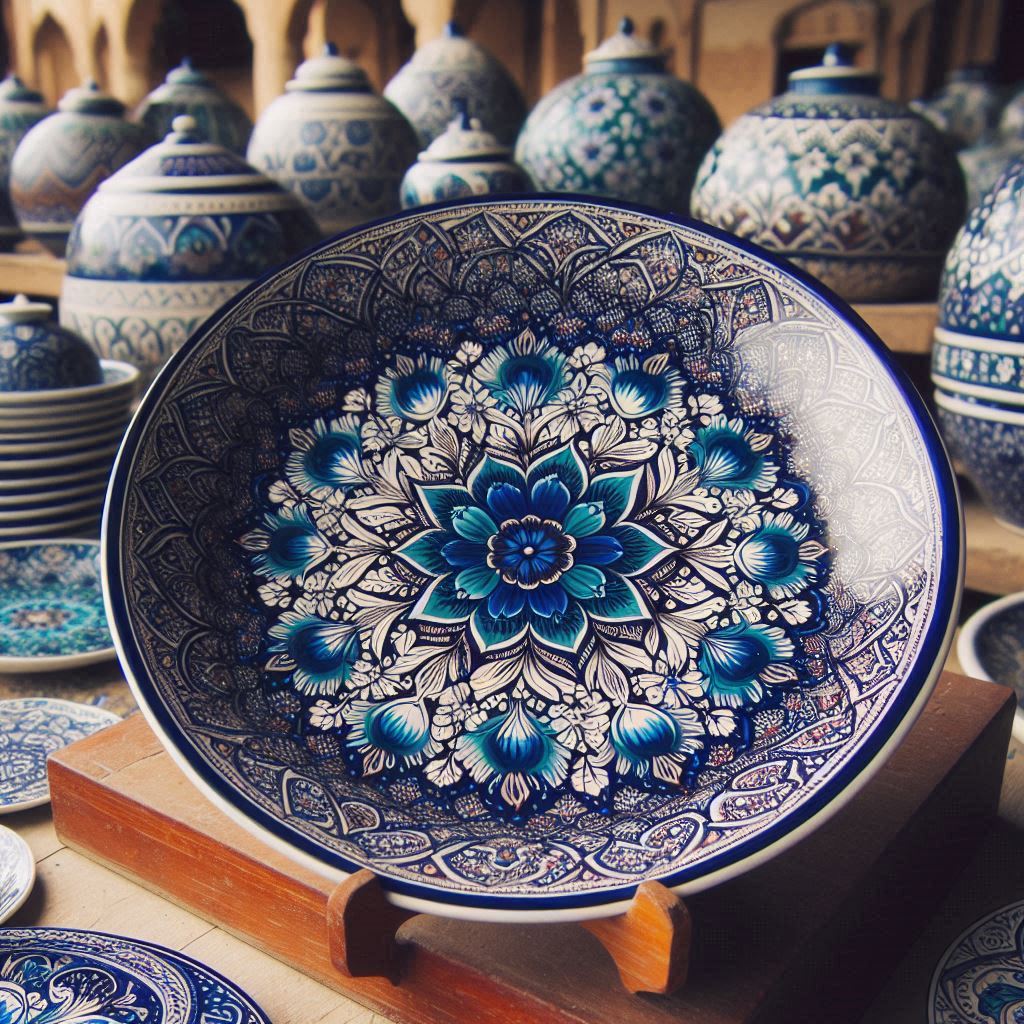 Blue Pottery of Multan-
Decorative Plate
Blue Pottery of Multan-
Decorative Plate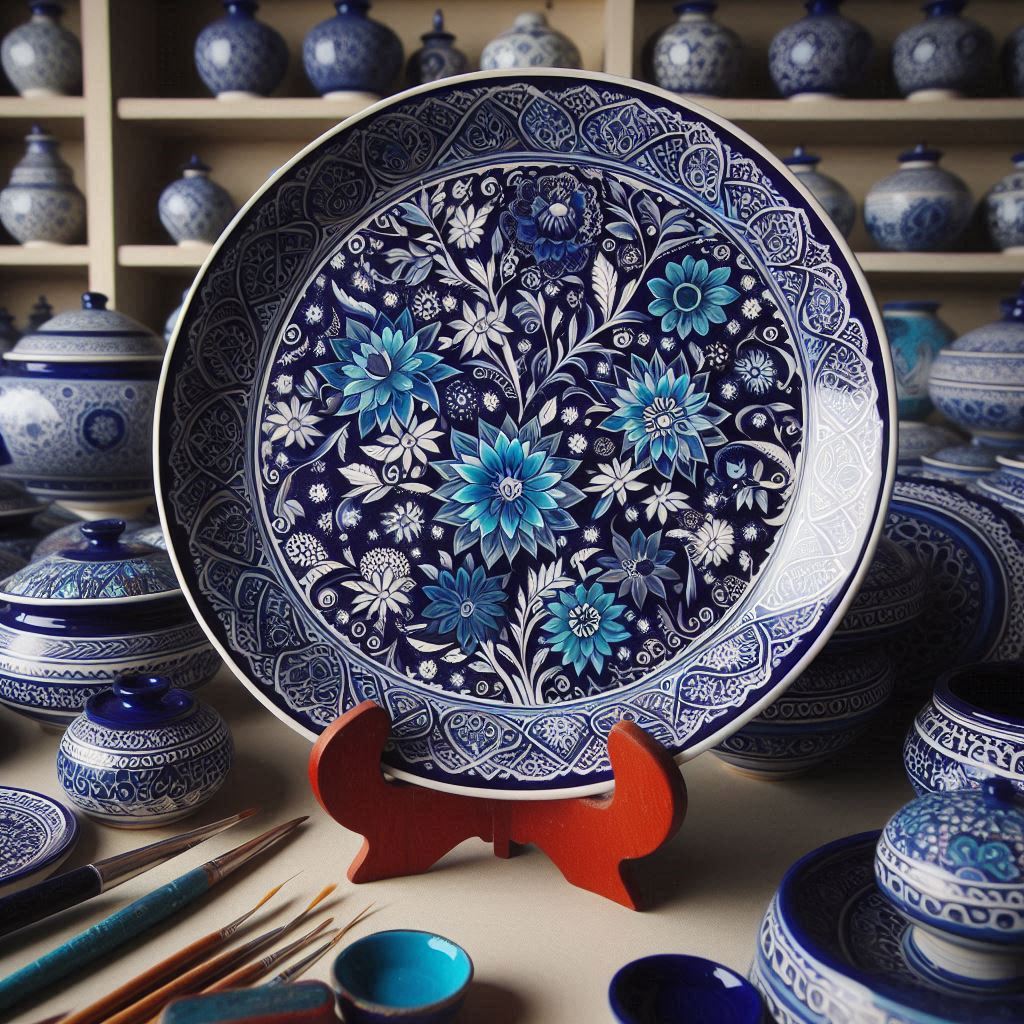 Blue Pottery of Multan-
Decorative Plate
Blue Pottery of Multan-
Decorative Plate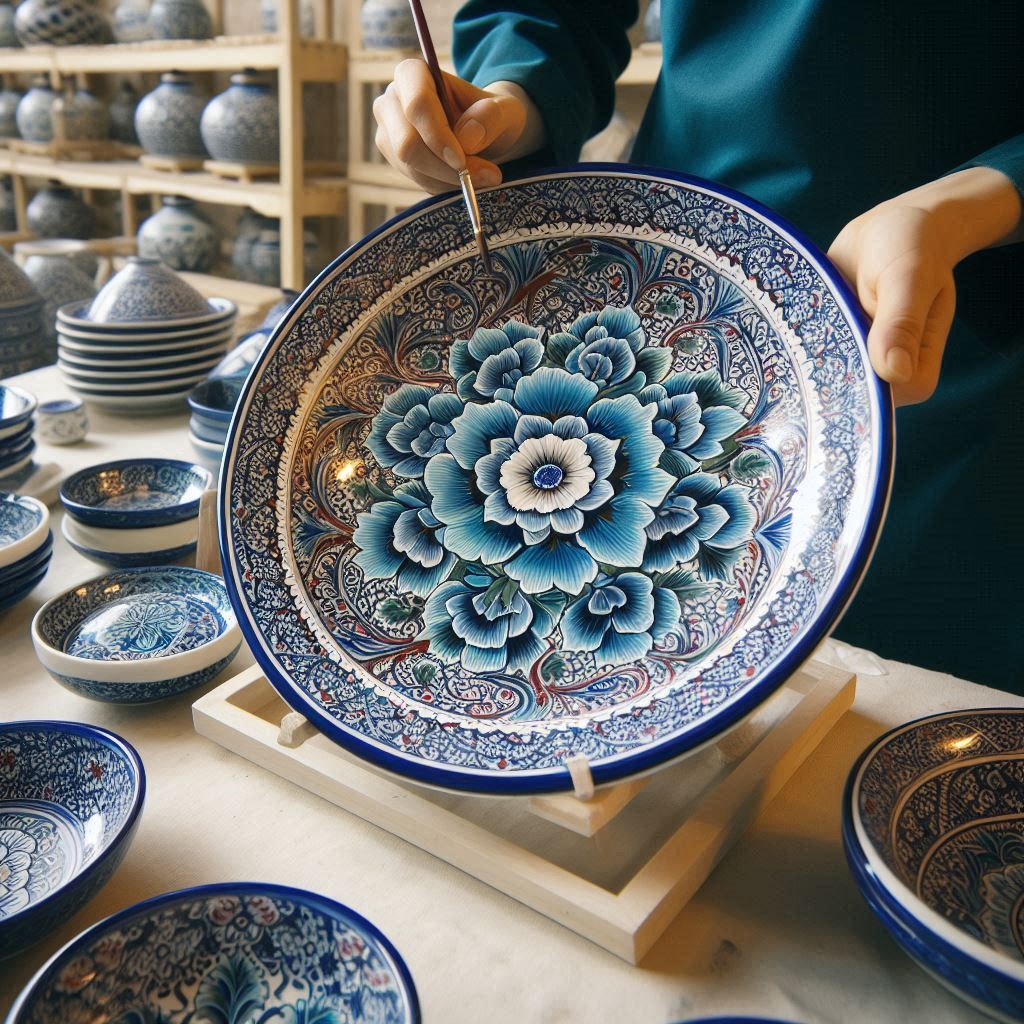 Blue Pottery of Multan-
Decorative Plate
Blue Pottery of Multan-
Decorative PlateBlue Pottery of Multan - Origins
The origins of the Blue Pottery of Multan can be traced back to the 12th century, when Persian artisans migrated to South Asia, bringing with them techniques of glazed tile work and ceramics. Over time, the city of Multan, already known as a hub of Sufi culture, embraced this artistic expression, blending local and Persian influences to create a unique style of pottery that still captivates the world today.
The defining feature of Multani pottery is its use of cobalt blue and white glazes, creating patterns inspired by nature, Islamic geometry, and cultural motifs. These designs often feature floral patterns, vines, arabesques, and intricate calligraphy, which reflect Multan's artistic flair and spiritual significance.
Women artisans have long been part of this craft, especially in passing down techniques and maintaining the beauty of this tradition. Today, many women-led initiatives are playing a crucial role in keeping this legacy alive.
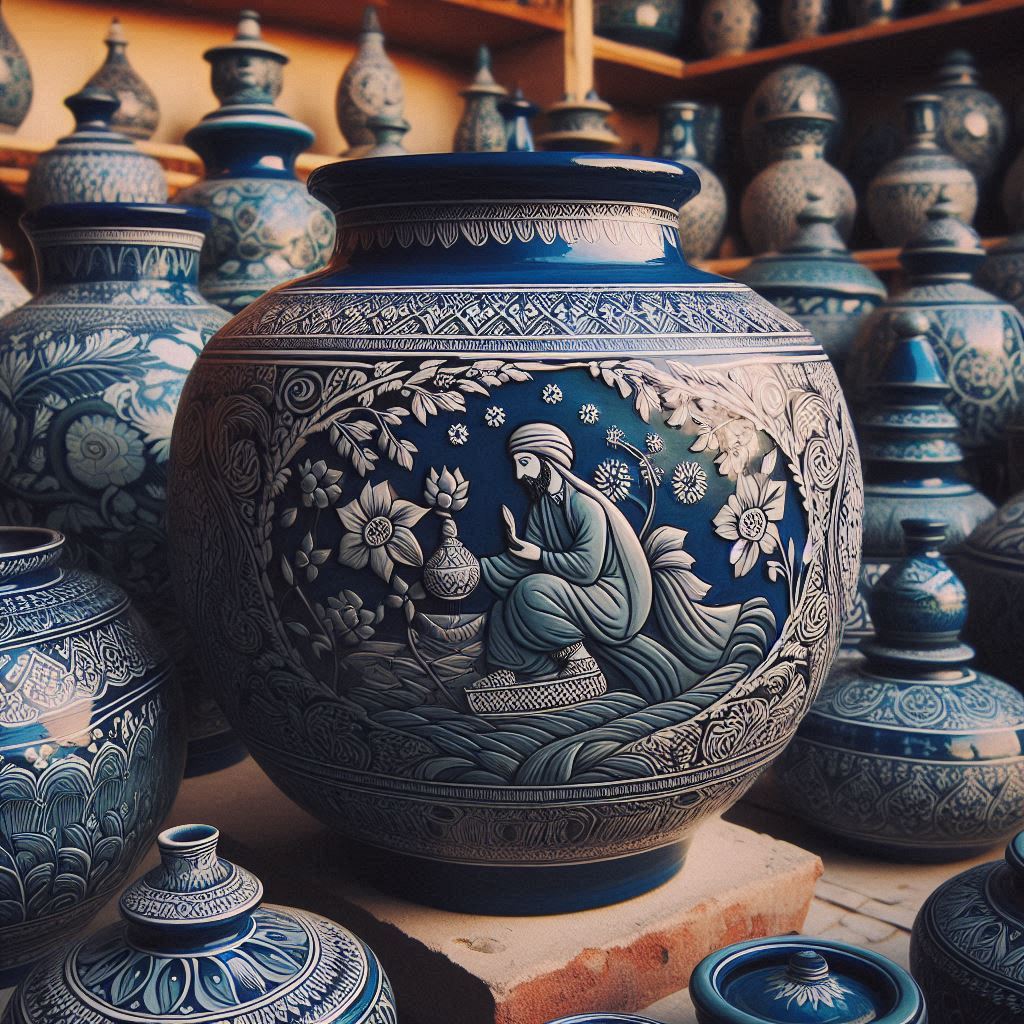 Blue Pottery of Multan-origins
Blue Pottery of Multan-origins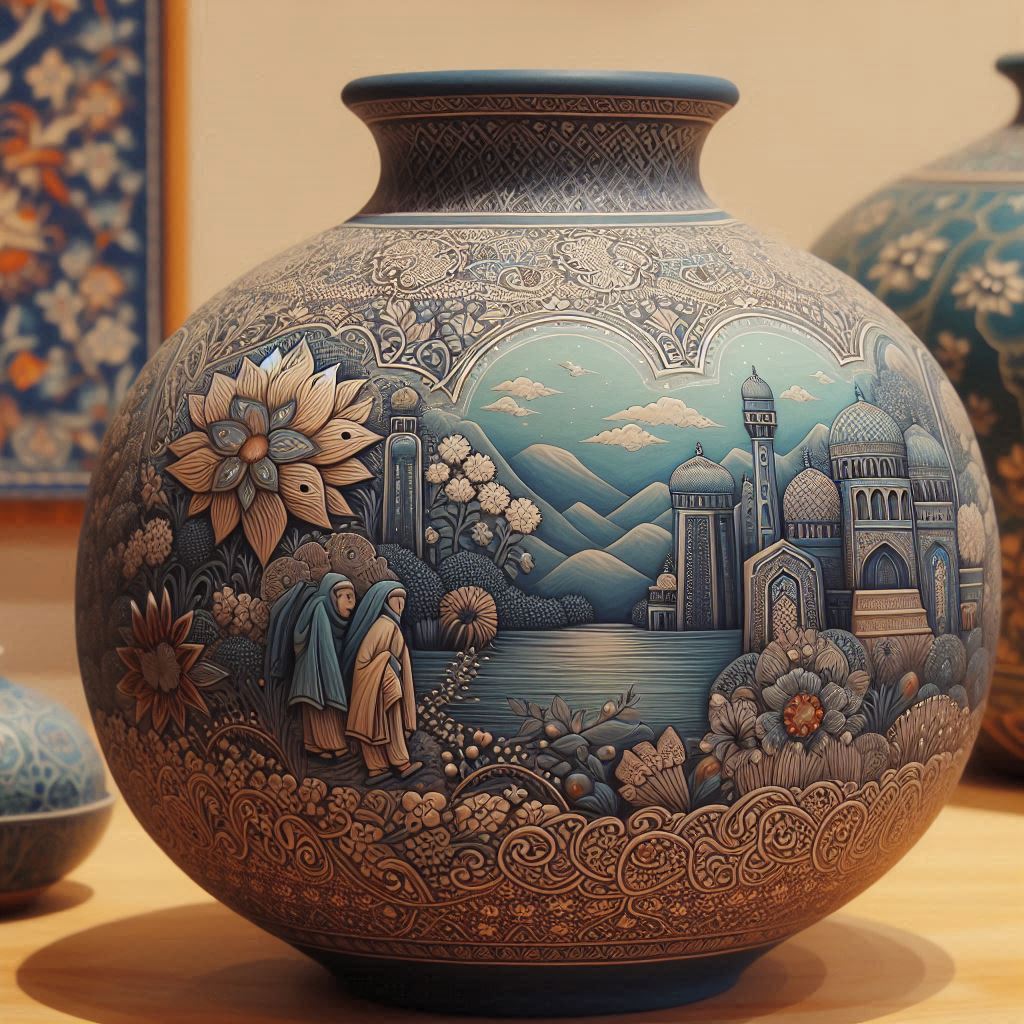 Blue Pottery of Multan-origins
Blue Pottery of Multan-origins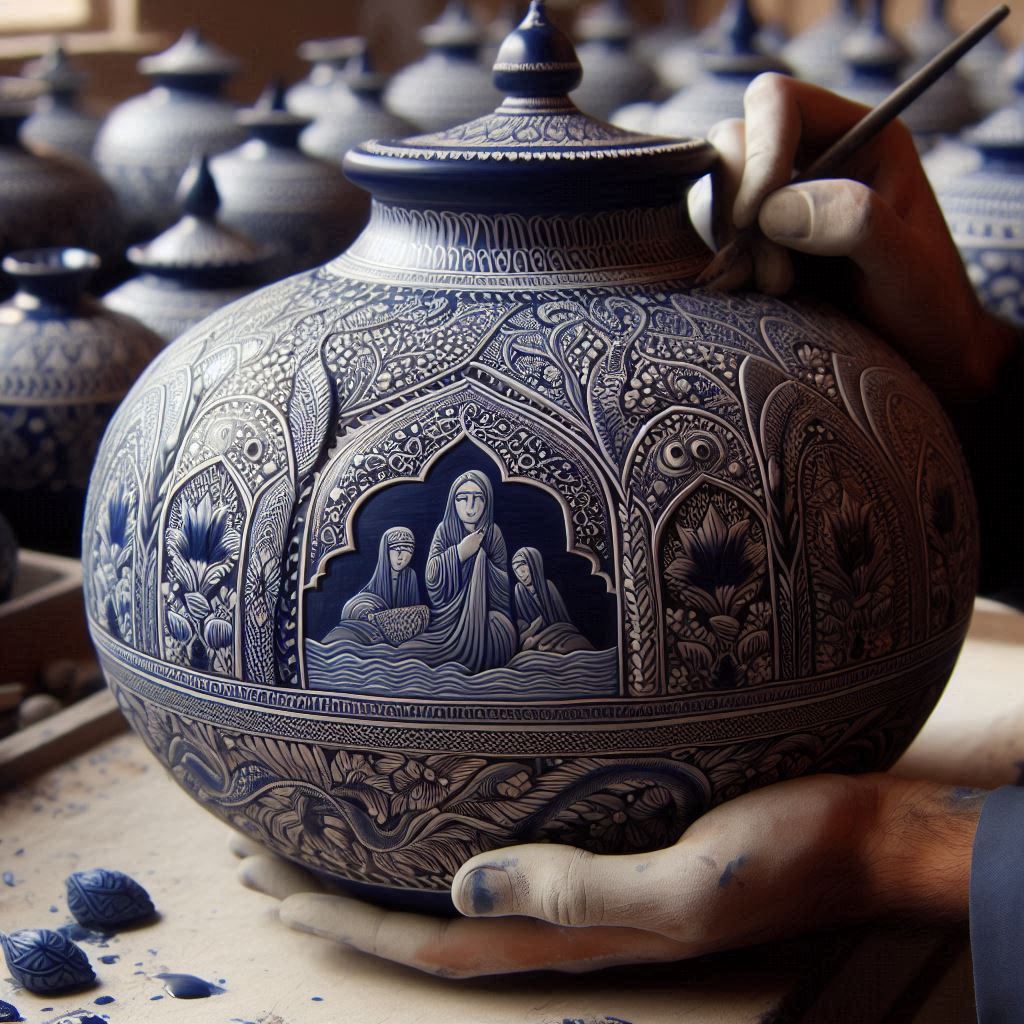 Blue Pottery of Multan-origins
Blue Pottery of Multan-originsBlue Pottery of Multan - Craftsmanship
and Technique
The hallmark of Multani Blue Pottery lies in its distinctive handcrafting techniques. Made from a unique clay mixture, often including ground quartz and glass, the pottery is first shaped by skilled artisans. Once the clay is molded, it is meticulously painted by hand using natural dyes, mainly in blue, turquoise, and white. The pieces are then glazed and fired in kilns, resulting in the signature glossy finish that defines Multani Blue Pottery.
The vibrant colors and intricate designs that adorn the pottery are created using a special technique called Kashi work, a traditional method of hand-painting and glazing that has been passed down through generations. The pottery made using a special clay mixture, is hand-painted with intricate designs, reflecting Islamic geometric patterns, flora, and fauna.
Women have played a significant role in shaping the craft behind the scenes, from molding the clay to painting delicate designs. With the rise of women entrepreneurs, many now lead artisan communities, offering training to other women, empowering them financially, and creating spaces where their artistry can thrive.
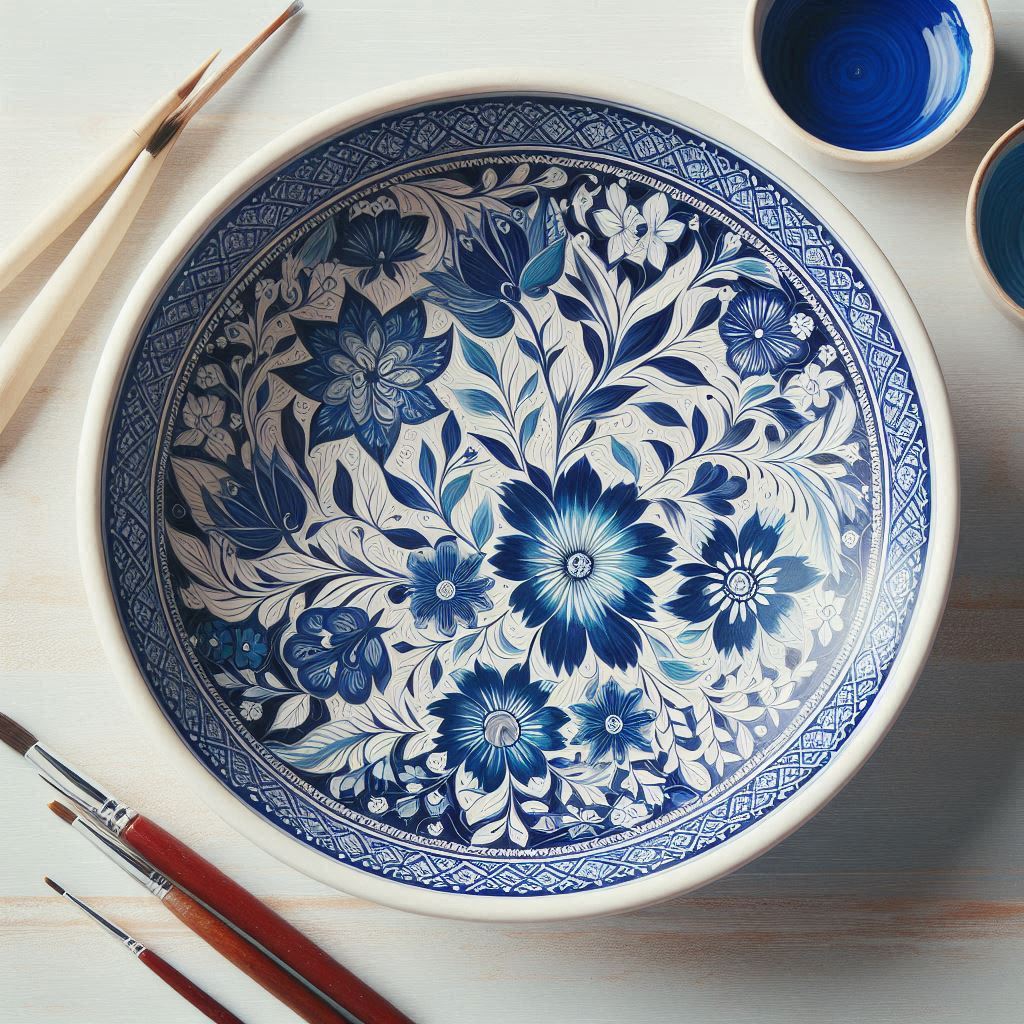 Blue Pottery of Multan Dish
Blue Pottery of Multan Dish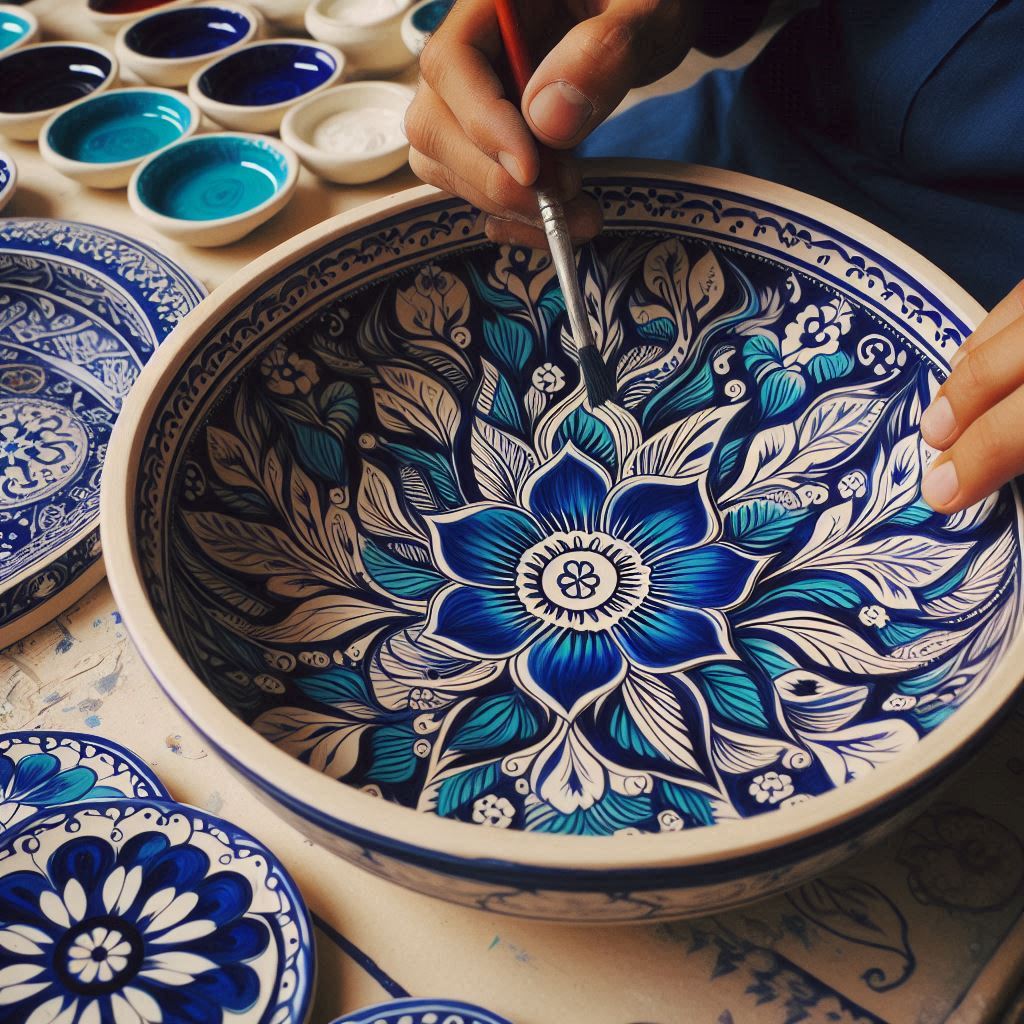 Blue Pottery of Multan Dish
Blue Pottery of Multan Dish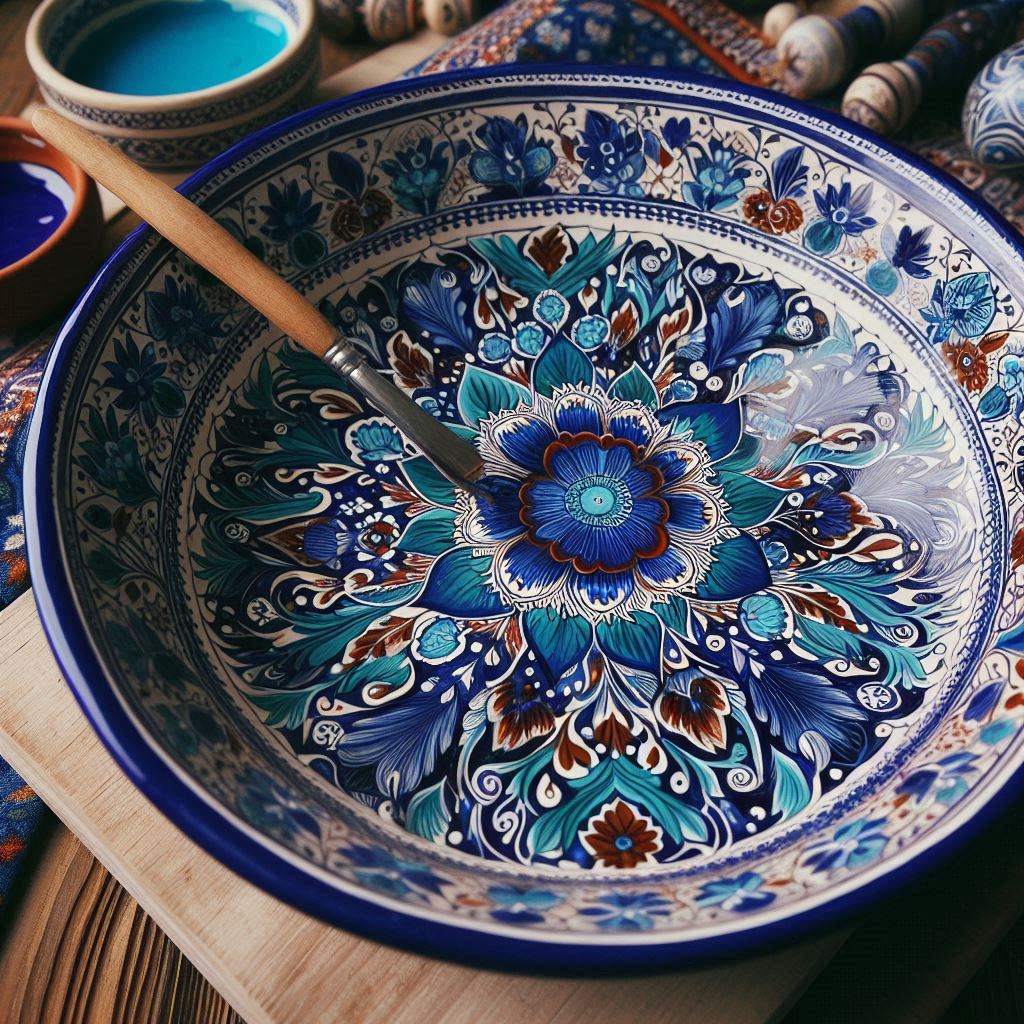 Blue Pottery of Multan Dish
Blue Pottery of Multan DishBlue Pottery of Multan and
Hala Pottery - A Shared Heritage
While Multan is renowned for its blue pottery, the town of Hala in Sindh is also famous for its own tradition of clay pottery. Like Multan, Hala has a rich heritage of craftsmanship that blends Persian influences with local styles. Known for producing a variety of ceramics, from intricate jugs and dishes to tiles, Hala’s artisans have long been respected for their skill in creating vibrant, colorful pottery.
Unlike the primarily blue and white tones of Multani pottery, Hala pottery is recognized for its earthy tones, with reds, greens, and ochres featuring prominently in its designs. The influence of Hala's craftsmanship is often compared to that of Multan, with both regions contributing significantly to Pakistan’s ceramic heritage.
Women in Sindh are at the forefront of producing and marketing Hala pottery, contributing to its survival and evolution. Women-run businesses have been particularly successful in promoting these crafts globally, collaborating with designers and taking the pottery to international exhibitions and online platforms.
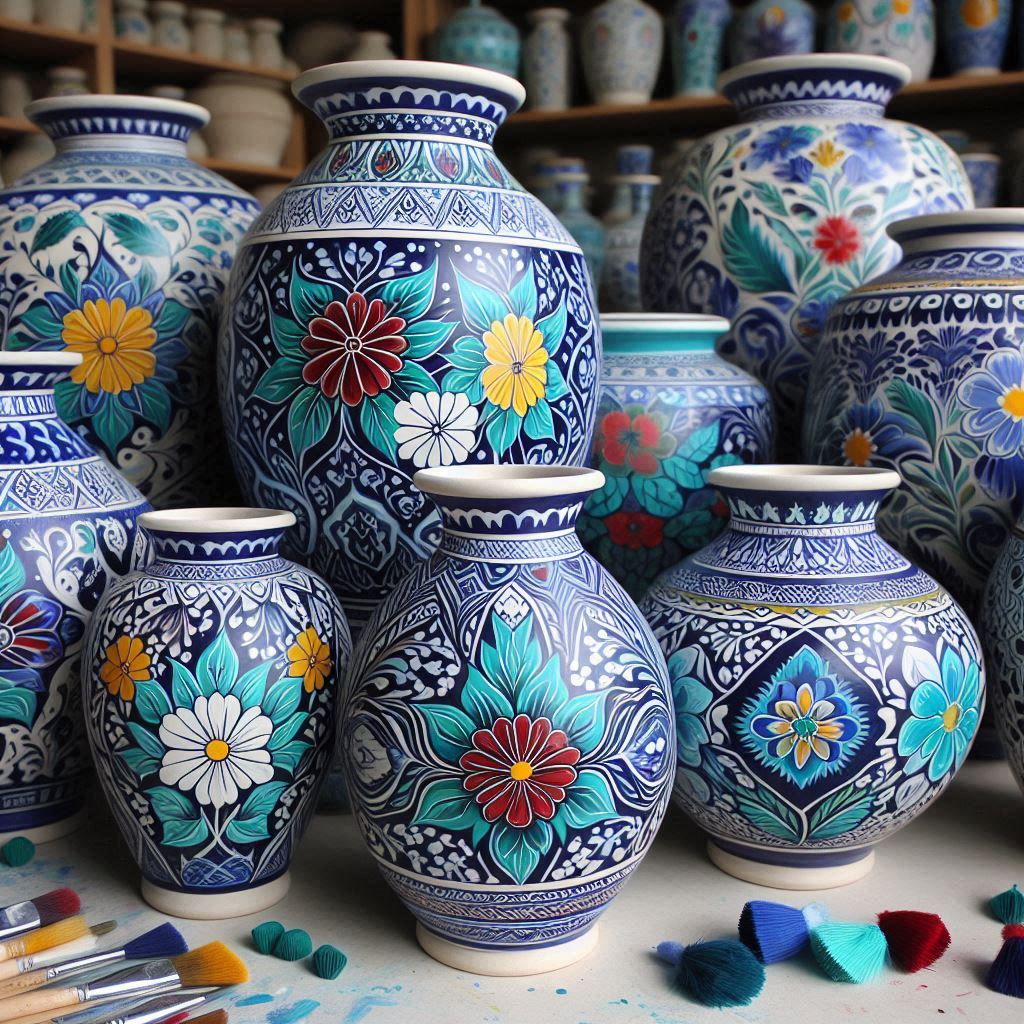 Blue Pottery of Hala
Blue Pottery of Hala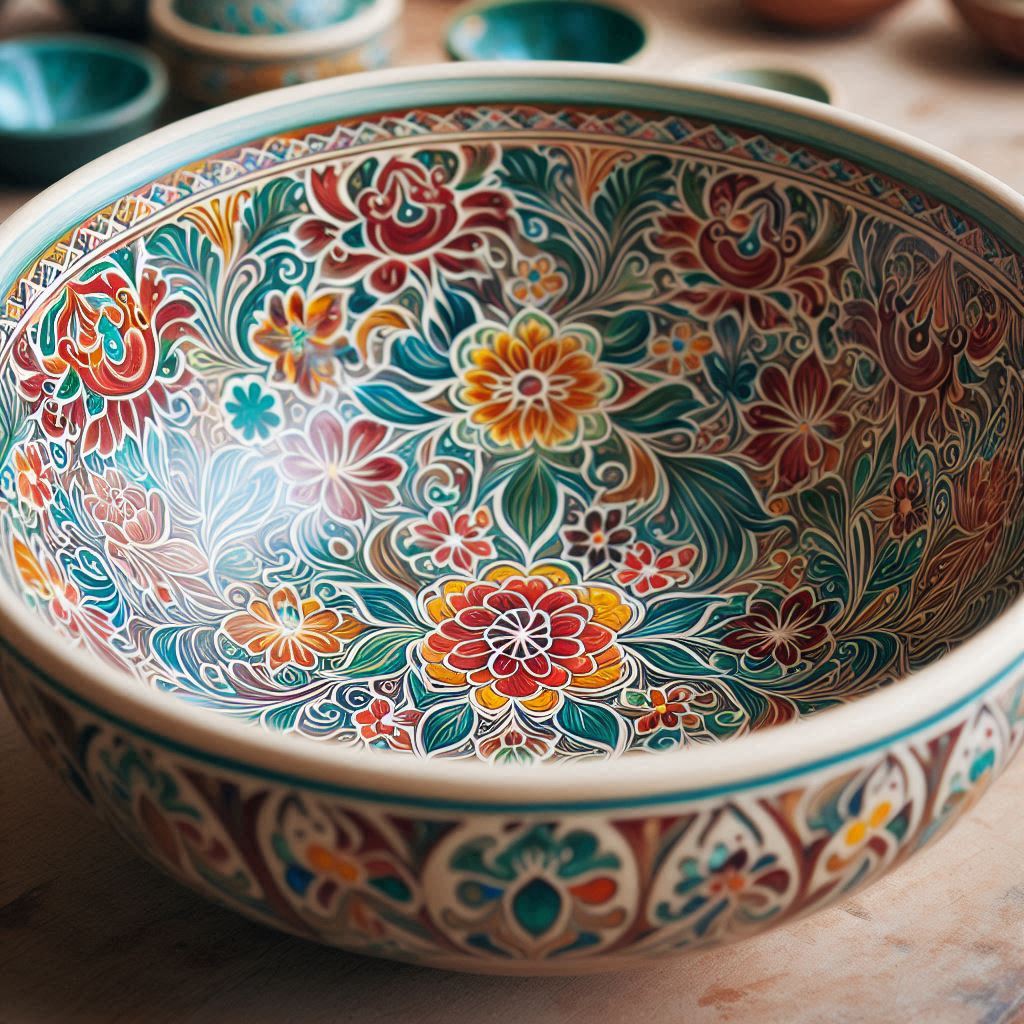 Blue Pottery of Hala
Blue Pottery of Hala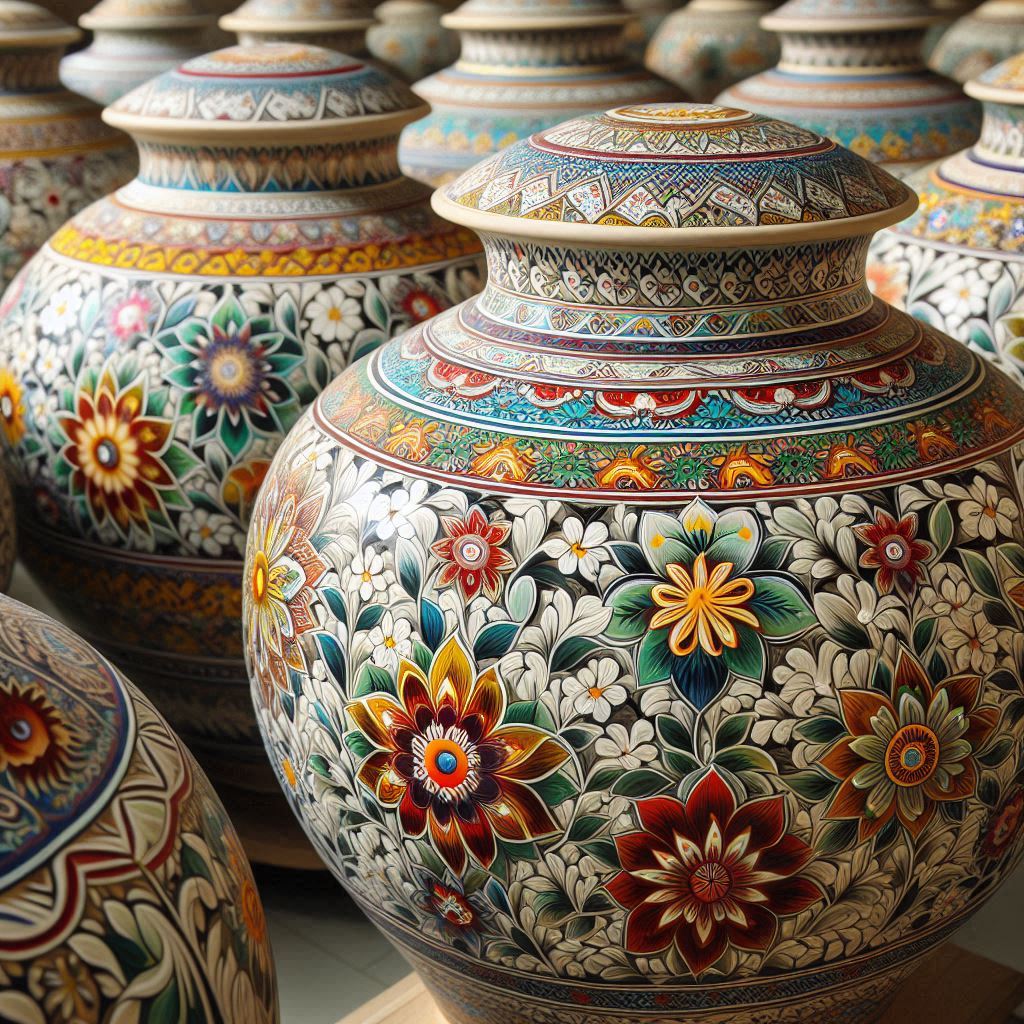 Blue Pottery of Hala
Blue Pottery of HalaBlue Pottery of Multan - A Living
Heritage
Today, Multani Blue Pottery continues to be celebrated both in Pakistan and abroad. It is seen not only as a decorative art but as a symbol of the rich cultural traditions of southern Pakistan. Despite challenges such as competition from modern ceramics and a dwindling number of artisans, efforts are being made to preserve and promote this craft, ensuring that future generations can appreciate the beauty of this centuries-old tradition.
Multani Blue Pottery, along with the clay pottery of Hala, represents a vital part of Pakistan's artistic legacy, showcasing the timeless beauty of handcrafted art and the enduring spirit of its creators.
Other than Multan and Hala, blue pottery and clay pottery of Pakistan are also found in various other regions of Pakistan i.e. Gujrat, Shahdra, Taxila and Nasrpur.
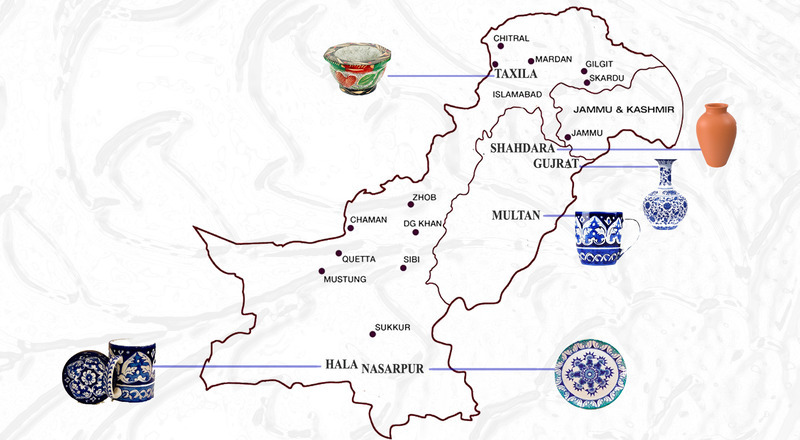
Source: Trade Development Authority of Pakistan (TDAP)
Blue Pottery of Multan - Empowering Women through Craft
The resurgence of women entrepreneurs in Multani Blue Pottery and Hala pottery has not only preserved a centuries-old craft but has also empowered women economically. Initiatives run by women support local artisans, provide employment, and promote these traditional crafts in both national and global markets. These entrepreneurs are transforming how this art form is perceived, modernizing it while staying true to its roots.
From artisan workshops in the heart of Multan to online boutiques selling intricate handcrafted pieces, women entrepreneurs are reshaping the future of blue pottery. Their efforts ensure that this beautiful tradition continues to flourish, while also paving the way for women's economic empowerment in Pakistan.
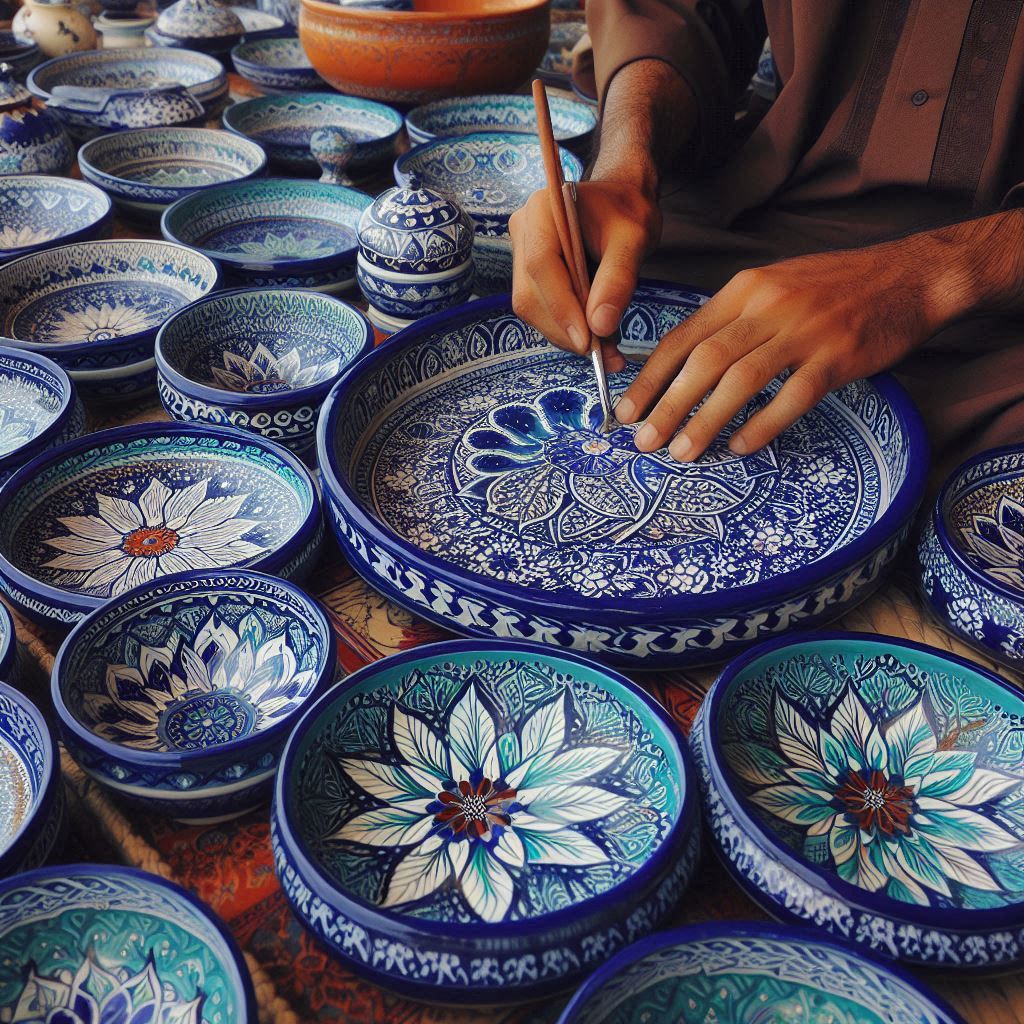
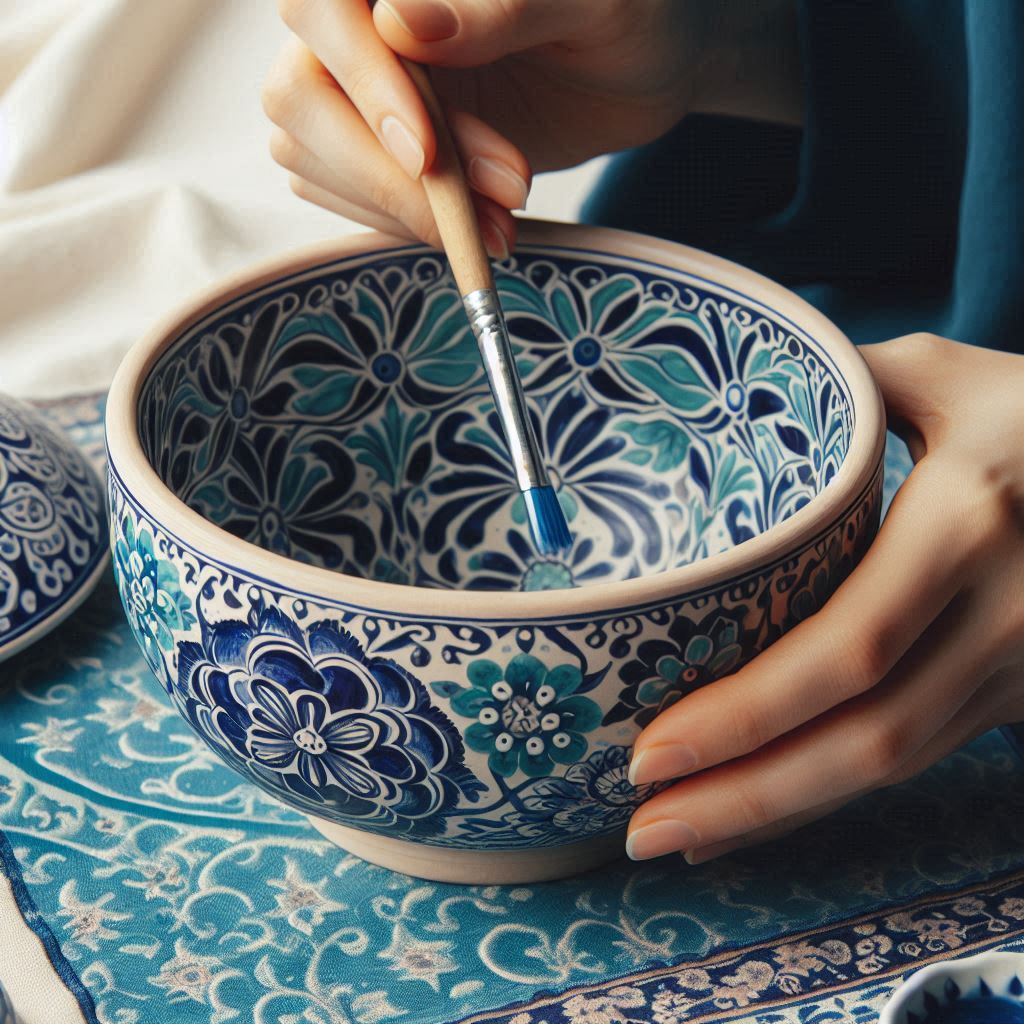
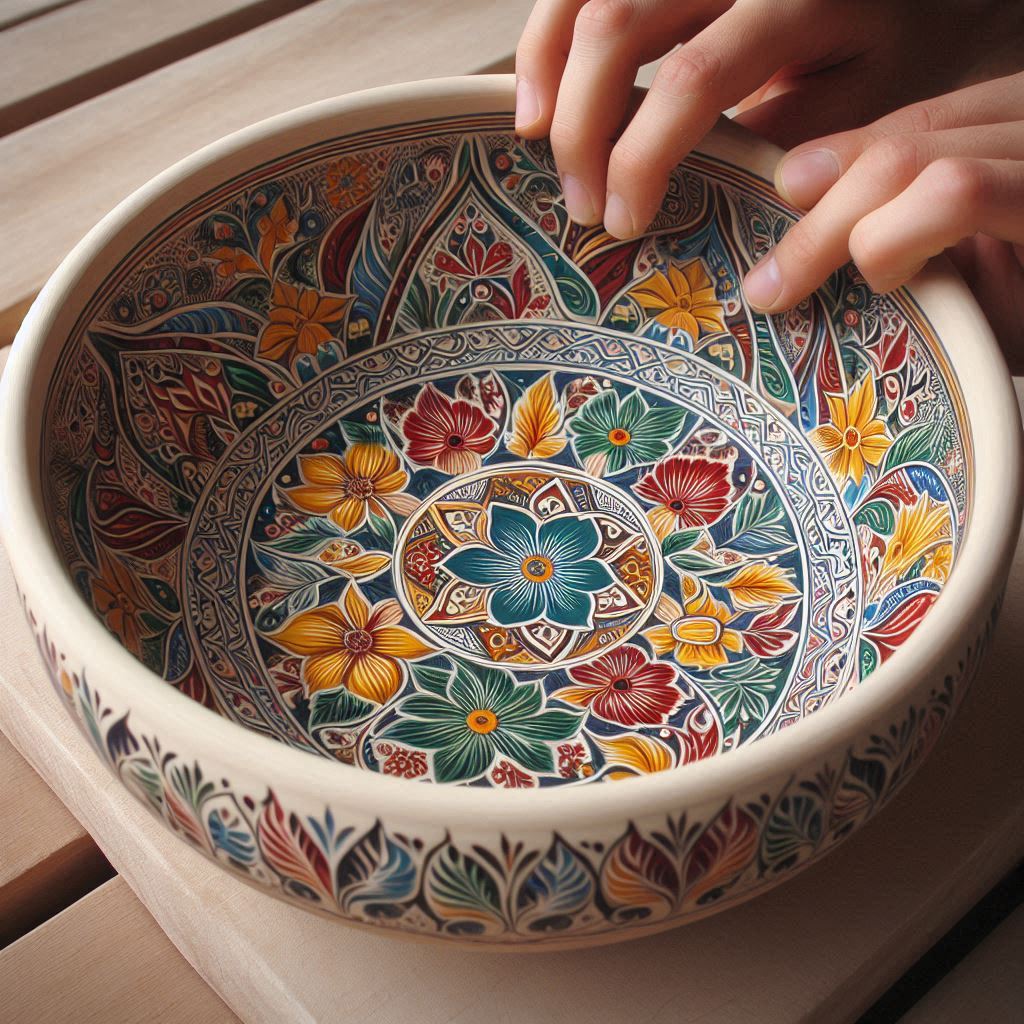
Blue Pottery of Multan - Export Initiatives
The initiatives implemented by the government institutions has been ongoing and has created export markets for the craft.
For more information, visit the website of Trade Development authority of Pakistan (TDAP) on the following link:
Exports of Blue Pottery of Pakistan - TDAP
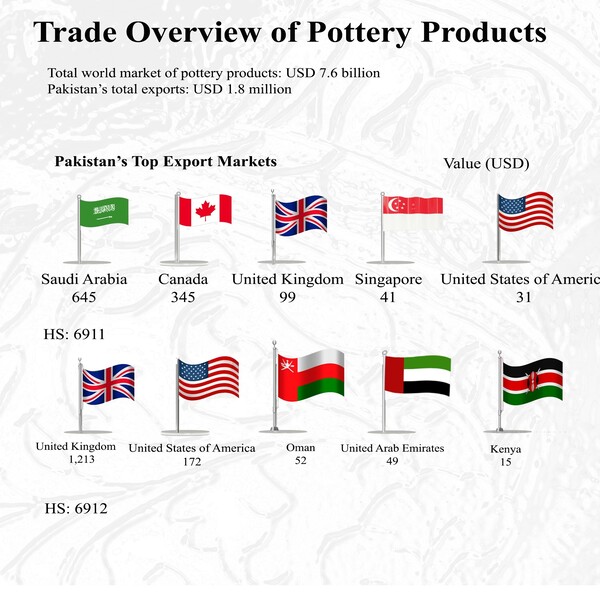
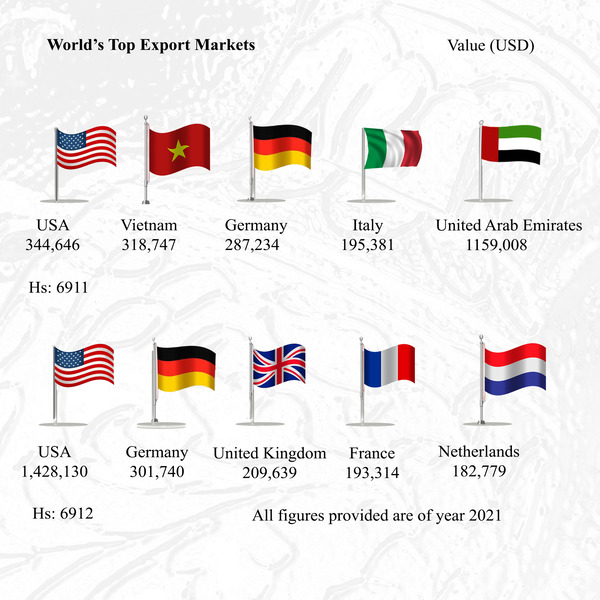
Source: Trade Development Authority of Pakistan (TDAP)
Exports of Blue Pottery of Pakistan- Pottery Development Institutes
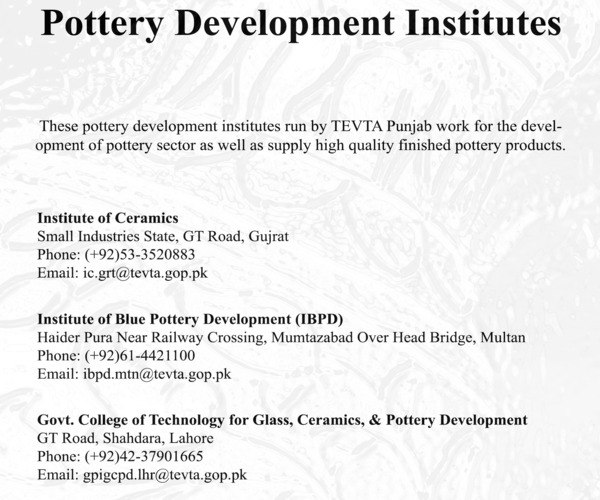
Source: Trade Development Authority of Pakistan (TDAP)
Blue Pottery of Pakistan - Non-Governmental Initiatives to Promote Traditional Crafts
While there may not be widespread recognition of specific cooperatives solely focused on women artisans in Multani Blue Pottery, there are initiatives across Pakistan aimed at empowering women in traditional crafts, which could extend to pottery work. These cooperatives or organizations often aim to provide skills training, access to markets, and economic empowerment.
Here are some key examples of similar initiatives that could align with the role of promoting traditional crafts and blending in women empowerment through the same:
1. Kaarvan Crafts Foundation
Kaarvan is a social enterprise that focuses on empowering women artisans across Pakistan, including in traditional crafts like pottery, embroidery, and weaving. While it may not specifically mention Multani Blue Pottery, Kaarvan promotes craftsmanship from different regions and encourages women’s participation in local economies. They could potentially work with artisans in regions like Multan, offering them a platform to promote their craft.
2. Behbud Association
Behbud is another well-known NGO that helps women in rural areas learn crafts and sell their products. It focuses on empowering women through skill-building and may include pottery as part of its craft promotion efforts. They support Pakistani women artisans and could potentially be involved with ceramic artisans in Sindh or Punjab.
3. Indus Heritage Trust (IHT)
Indus Heritage Trust promotes and preserves Pakistan’s heritage, specifically crafts that are native to different regions of the country. The organization provides support to artisans, many of whom are women, through training and market linkages. Although IHT may not have a strong emphasis on Multani Blue Pottery, their general work on handicrafts could provide insights into how cooperatives might be structured.
4. Local Artisanal Markets and Small-Scale Cooperatives
Often, local markets and small-scale cooperatives run by women may not be as formally recognized or widespread but play a vital role in their communities. These women-led initiatives focus on pottery and crafts, selling their work in local bazaars, exhibitions, or through online platforms.
- Home
- Pakistani Home Decor
- Blue Pottery of Multan


